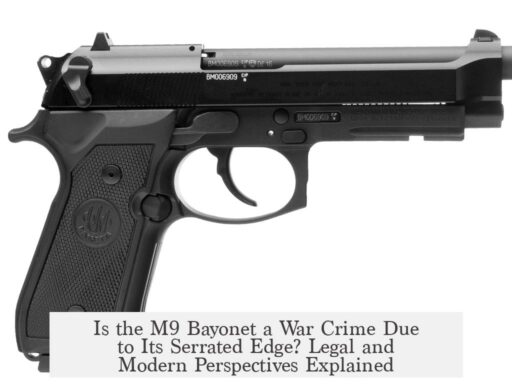The perceived surge of serial killers in the 1970s results largely from enhanced law enforcement methods, evolving criminal psychology, and cultural factors rather than an actual increase in their numbers.
This decade saw famous serial killers gain notoriety, but research suggests serial killing was not necessarily more prevalent then than in other periods. Instead, several factors combined to raise awareness and detection, altering public perception and law enforcement responses.
First, the increase in reported and apprehended serial killers ties closely to advances in law enforcement technology. The 1960s and 1970s introduced standardized emergency reporting, such as 911, and two-way radios that allowed faster communication.
| Technology | Impact |
|---|---|
| 911 Emergency Number | Quicker crime reporting |
| Two-way Radios | Improved police coordination |
| FBI’s NCIC database (1967) | Centralized crime data integration |
| Fingerprint Automation | Enhanced suspect identification |
The establishment of federal databases, like the FBI’s National Crime Information Center in 1967, and improvements in biometrics enabled law enforcement to match crimes and suspects more effectively. This contributed to a higher detection rate of serial offenses.
Next, federal law enforcement agencies broadened their approach by conceptualizing serial murder as a national problem instead of isolated cases. The FBI sponsored research and interviews of incarcerated serial killers to build profiles that assisted local police across jurisdictions. This initiative unified investigation efforts, increasing arrest rates and public knowledge.
The emergence of behavioral science dramatically changed understanding during this time. The FBI’s Behavioral Science Unit, formed in the 1960s and 1970s under pioneers such as Howard Teten and Patrick Mullany, developed formal offender profiling. This scientific method illuminated the psychological patterns behind serial crimes and helped police recognize escalating criminal behavior.
The term “serial killer” itself became popular in this era. While rarely found in English crime literature before the 1970s, its coining clarified distinctions between serial killers and other violent offenders. It prompted more focused study and media attention, shaping criminal justice and public discourse on serial violence.
Cultural shifts also influenced responses to serial killers. The 1960s-70s marked growing awareness of child abuse, sexual assault, and domestic violence, helped by developments in psychology and feminist theory. These shifts enhanced institutional and social responses to violent crimes, indirectly aiding the profiling and capture of serial offenders.
Speculative theories exist that the post-WWII generation, affected by trauma and PTSD in veteran parents, contributed to an increase in violent behavior. However, these psychological and sociological links remain unproven and speculative.
In summary, the perceived rise of serial killers in the 1970s stems from:
- Advances in law enforcement communication and data systems improving detection
- Federal efforts to study and unify serial murder as a national concern
- Development of criminal psychology and behavioral profiling techniques
- The formal adoption of the term “serial killer,” clarifying the category
- Cultural changes increasing awareness and visibility of violent crimes
Overall, the 1970s did not necessarily see more serial killers than other eras. Instead, innovations in technology, policing, science, and culture combined, spotlighting that specific cohort and embedding them into the public imagination.
- Serial killer detection improved with technology and databases
- The FBI helped frame serial murder as a widespread phenomenon
- Behavioral profiling developed during this period
- “Serial killer” term popularized, shaping understanding
- Cultural shifts increased institutional attention to violent crime
- Speculative trauma theories exist but lack strong evidence
Why Were There So Many Serial Killers in the 70’s?

Simply put: There weren’t necessarily more serial killers in the 1970s, but thanks to advances in law enforcement, media attention, and the birth of criminal profiling, this era became infamous for them. Let’s dig into why the ’70s got such a bad rap when it comes to serial killers—and why this reputation might not tell the whole story.
When people think of serial killers, the 1970s often dominates the conversation. Names like Ted Bundy, John Wayne Gacy, and the Zodiac Killer jump to mind. But did the number of serial killers truly spike during this period, or is something else at play? The answer twists through advances in technology, evolving psychology, and culture itself.
Fame vs. Frequency: Why the 70s Stuck in Our Minds
It may come as a surprise, but serial killers weren’t new in the ’70s, nor were they necessarily more common. Some expert studies suggest that serial killers existed in equal or even greater numbers before—and after—that decade.
So why do those from the ’60s and ’70s dominate public memory? A huge part is their unique profiles and the explosion of media attention. As one observer put it, this cohort of criminals captured imaginations unlike any before them. Stories spread faster. Graphic details clipped across newspapers and television, turning these criminals into almost infamous celebrities.
Without the media frenzy and evolving law enforcement methods, these names might have remained local scares, barely known outside their cities. The media’s spotlight made these killers notorious figures, sometimes to the point where we forget other decades had their share—just less well-publicized.
Tech Transformations: How Law Enforcement Got Smarter
Before diving into heart-pounding tales, law enforcement had a blind spot: identifying and linking serial crimes was tough. That changed dramatically in the 1960s and ’70s due to a tech boom that made a massive difference.
Consider this: The nationwide introduction of the 911 emergency number made crime reporting swifter. Two-way radios improved communication between officers. Meanwhile, centralized data systems such as the FBI’s National Crime Information Center (NCIC) started in 1967, and by 1975 incorporated missing persons databases.
Fingerprint identification began moving into automation, turning hours or days of manual comparison into minutes. Suddenly, piecing together crime patterns became less guesswork and more science.
What does this mean? Law enforcement could now identify serial killers more quickly and link crimes that previously seemed unrelated. The “rise” in serial killers is partly an artifact of better detection.
Unifying the Serial Killer: The FBI’s Crucial Role

The FBI wasn’t just building databases; it was shaping how America understood serial crime. In previous decades, serial murders were seen as scattered anomalies. The FBI’s behavioral analysis unit, emerging in the ’60s and booming in the ’70s, pushed the idea that serial killers were part of a national—or even international—phenomenon.
Interviews with incarcerated serial killers led to new policing strategies. The term “serial killer” itself was formalized during this time, helping distinguish these offenders from other criminals.
Imagine law enforcement before this as a jigsaw puzzle missing half its pieces. This new approach started putting the puzzle together, shifting perception from isolated horrors to a larger, terrifying pattern. This was a game-changer for both policing and public understanding.
The Birth of Profiling: Criminal Psychology Enters the Scene
Before the ’60s, the idea of profiling criminals was often a hunch or an art, not science. Enter behavioral pioneers like Howard Teten and Patrick Mullany, whose work in the FBI’s Behavioral Science Unit turned profiling into an official, funded discipline.
This era marked the formalization of what we now consider the modern understanding of serial killers. The “escalation” pattern—from minor crimes like burglary to serial murders—became a framework for tracking offenders.
This not only helped law enforcement catch killers sooner but gave society an (albeit chilling) glimpse into the criminal mind. Suddenly, serial murder wasn’t just shock news; it was a phenomenon with patterns and warning signs.
The Power of a Name: Why “Serial Killer” Matters
The term “serial killer” may seem ordinary now, but it was revolutionary in the 1970s. Before then, criminal literature rarely used the term. With its coinage, the definition helped clear up confusion in the field.
It wasn’t just a new word; it was a new lens. Researchers and law enforcement began evidence-based studies on offender histories and behaviors. This clinical approach brought clarity and seriousness to a sensational topic.
Interestingly, the term had appeared earlier in German criminology, but the ’70s American re-birth of the term sealed its place in public and professional vocabularies. This shaped both how serial killers were understood and how their stories were told.
Cultural Shifts: Violence Comes Into Focus

The 60s and 70s also saw big cultural changes. Issues like child abuse, sexual assault, and domestic violence, once taboo or ignored, moved into the spotlight. This wave was driven by psychology breakthroughs and social movements, particularly feminism.
As society paid more attention to interpersonal violence’s complexity, the professional understanding of serial killers’ psychology also deepened.
This cultural awareness helped professionals create better profiles and helped the public grasp the seriousness of serial crimes beyond mere headlines.
A Speculative Twist: Could PTSD Have Played a Role?
Some speculate that the children of WWII veterans—many potentially affected by PTSD—may have contributed to a spike in violent behaviors during the ’60s and ’70s. This theory remains largely unproven but taps into the idea that trauma can ripple across generations.
Though intriguing, this idea lacks clear evidence. It highlights how complicated the causes of serial killing are—combining biology, psychology, environment, and chance.
Wrapping It All Up
The reputation of the 1970s as the serial killer “golden age” is more about perception than raw numbers. Advances in communication and law enforcement technology, combined with new psychological insights and cultural shifts, all made serial killers more visible and less “hidden.”
The term itself came into sharp focus, and policing got smarter. Media coverage blasted these stories into the public consciousness as never before. All this created a perfect storm giving the era its grim notoriety.
So next time you think about serial killers from the ’70s, remember: It’s not necessarily that more killers walked the streets. Instead, we got better at finding them, understanding them, and telling their stories. Sometimes, history’s myths owe more to how we look than to what actually happened.
Key Takeaway
- Technological improvements and data systems revolutionized crime detection.
- “Serial killer” emerged as a clinical, behavioral term in the 1970s.
- Federal efforts unified understanding of serial killers as a widespread phenomenon.
- Cultural shifts brought violence into the spotlight, aiding law enforcement profiling.
- Media amplified public perception, making the 70s infamous.
Curious about how these developments shaped law enforcement today? The Behavioral Science Unit paved the way for modern profilers. The databases laid the groundwork for nationwide crime-fighting efforts.
And who knows—maybe the story of serial killers in the 70s is less about numbers and more about humanity’s evolving ability to reckon with its darkest shadows.




